You need
Little Musician LITE
to use this: Download
Little Musician LITE.
Also works
with Little Musician PRO.
Includes ONE key for ONE PC.
You may re-activate
UP TO 2 times only.
Want to teach your young child about music? Now you can with the Music Curriculum Pack for Little Musician!
This curriculum pack will help you nurture your child's interest in music, develop innate musical talent and provide a solid foundation in music education.
Download, import it to Little Musician, and start teaching!

Semester 1 & 2: 12 months' worth of lessons in English
A ready-made curriculum already prepared for you.
The full Little Musician curriculum spans a period of one year, with two semesters of six months each.
Based on a five-day week, each semester comprises 130 days of lessons.
Each day's session is made up of a number of different lessons. For example, a day's session in Semester 1 contains the following lessons:
 Want to EDIT and CREATE your own lessons?
Want to EDIT and CREATE your own lessons?
Looking to change your playback settings? Unleash Little Musician's FULL editing features with UNLOCK PRO for LITTLE MUSICIAN!
Customization
Teach the way you want to teach.
Little Musician is not just wonderful music content you can show your child. It is also a powerful platform for you to deliver music lessons the way YOU want to!
Learn more about Little Musician

Kids having fun with Little Musician
"Lily and Owen were immediately enthralled with the program from day one. I am so happy to say that Little Musician delivered above and beyond my expectations - Lily now has perfect pitch and Owen is well on the way to following in her..." Read full testimonial
Tonya (TeachingMyToddlers)
Mom of Owen and Lily
In Semesters 1 and 2 of the curriculum, you will see these types of lessons - more than once a session in some cases:
1. Chord Recognition
There are nine chords that we want your child to be able to recognize instantly. (For you musicians, these are the C, F, and G chords, in root, first inversion and second inversion.) The chords are played with instruments, and sung out in solfège. Examples are "domiso" for the C Major (root) chord, and "falado" for the F Major chord. Together, the nine chords cover all the notes of the C Major scale (white keys). This is similar to the Eguchi method used in Japan, which some consider to be the best way to foster 'perfect pitch' and which apparently has produced a very high success rate.
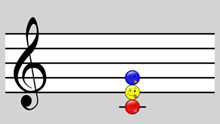
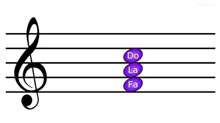
2. Note Sounds
This is the most basic of lessons, and lets your child associate pitch with the written note on the musical staff. It's a good way to show how higher pitched notes are written higher and lower pitched notes lower. Random instrument sounds are used each time.

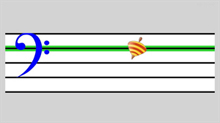
3. Solfège
These lessons teach individual notes in solfège (eg., Do, Re, Mi), with notes shown on the musical staff. Your child will start associating pitch with the note position on the musical staff, as well as with the relevant solfège syllable. Semester 1 focuses purely on C Major. Semester 2 introduces solfège in F Major. Lesson slides are forwarded manually because we want to encourage you to take your time to interact with your child. During the lessons, it's very important to sing out the note you hear, and - if possible - encourage your child to sing it out, too.
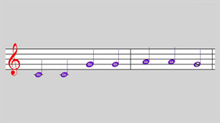
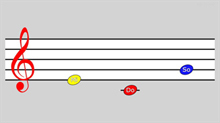
4. Exercises
These are exercises which help train the ear (Hear and Sing), and help to promote sight-reading of notes (See and Sing). Hear and Sing exercises train both chord recognition, as well as individual note recognition, encouraging your child to listen to the chord or note, and sing it out in solfège. See and Sing exercises show notes on the musical staff and encourages your child to sing it out in solfège, similar to how your child would read out words or sentences.
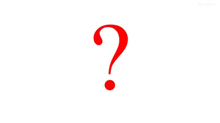
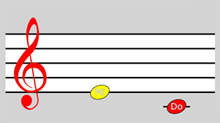
5. Clap-Along
Clap-Along lessons are designed to give your child an introduction to rhythm and beats. During these lessons, children songs (such as Twinkle, Twinkle Little Star) are played, and your child is encouraged to clap along to the beat. Different beat rhythms are introduced as the curriculum progresses.
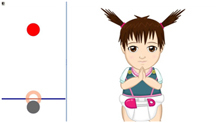
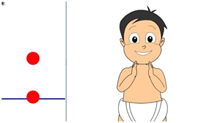
6. Music Knowledge
In these lessons, your child will get to learn more about how music is made. First, your child is introduced to different musical instruments (eg., violin, trumpet, clarinet), hear what they sound like, and see how they are played. Second, your child will also learn more about famous classical composers (eg., Bach, Mozart, Beethoven) and some of the famous pieces they composed.

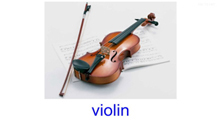

7. Music Appreciation
The aim of these lessons is to expose your child to classical music, and through the exposure, let her gain familiarity with (as well as appreciation of) classical music. These lessons include clips from fifty of the most popular classical pieces, such as Beethoven's Fifth Symphony and Handel's Hallelujah Chorus.
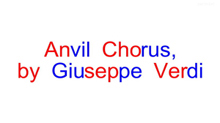

8. Rhythm
Rhythm lessons will introduce your child to rhythm syllables, such as "Ta" for quarter notes/crotchets, and "Ti" for eighth notes/quavers. Rhythm syllables are a good way to learn how music notation on the musical staff indicate different lengths of time, and therefore how rhythm is notated. Rhythm lessons start from Semester 2.


9. Scales
Through these lessons, your child will see and hear different scales in different keys. Lessons cover both major scales as well as the different minor scales (harmonic, melodic and natural), and are played out using instruments as well as with solfège voices. Scales lessons start from Semester 2.

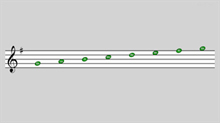
10. Keyboard
Keyboard lessons will introduce your child to the keyboard, showing how the different black and white keys of the keyboard correspond to the different solfège notes and music pitches. Instead of perceiving the keyboard as an overwhelming sea of black and white keys, your child will see them in distinct groups made up of lower to higher octave patterns. Keyboard lessons start from Semester 2.
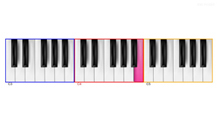




 Call or leave us a message:
Call or leave us a message:
(+1 707) 336 2022
Or email us at [email protected]
Support Hours are Mon - Fri
10am - 5:30pm Hong Kong Time
(UTC/GMT +8 hours)